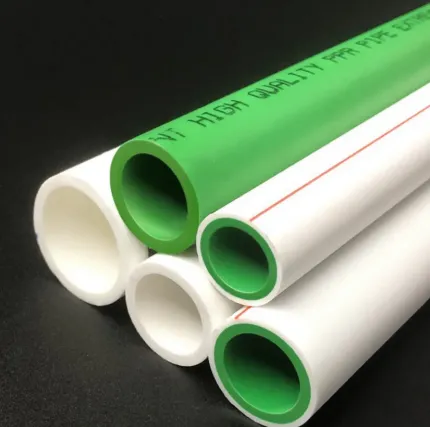Dec . 23, 2024 14:43 Back to list
Choose PPR Pipe for Your Plumbing Needs
When it comes to plumbing systems, material selection plays a crucial role in ensuring efficiency, durability, and safety. 20mm PPR pipe, PPR pipe heating time, and PVC pipe vs PPR pipe are key considerations for anyone looking to install or upgrade their plumbing system. Here's why 20mm PPR pipes might be the right choice for you.

20mm PPR Pipe: Ideal for Compact Spaces
The 20mm PPR pipe is a versatile and reliable solution for plumbing systems that require a compact pipe size without sacrificing strength. Perfect for residential and commercial use, 20mm PPR pipe is widely used for cold and hot water distribution systems. With its ability to resist high pressure and temperature fluctuations, this pipe offers exceptional durability. China 25mm HDPE pipes, Whether you’re installing plumbing in a small apartment or a larger commercial space, 20mm PPR pipe provides an efficient solution that stands the test of time.
Understanding PPR Pipe Heating Time
One of the essential factors to consider when installing a PPR pipe system is PPR pipe heating time. The process of heating PPR pipe is crucial for ensuring secure, leak-proof joints when using fusion welding technology. The correct PPR pipe heating time guarantees that the pipes and fittings bond effectively, providing long-lasting, reliable connections. Typically, PPR pipe heating time ranges from a few seconds to a minute, depending on the pipe size and the welding equipment used. Proper heating ensures the pipe retains its integrity, even under extreme conditions.
PVC Pipe vs PPR Pipe: Which Is Better?
When comparing PVC pipe vs PPR pipe, both materials have their unique advantages, but PPR pipe offers a number of benefits that make it a preferred choice for many applications. PVC pipe is generally used for cold water and drainage systems, China 25mm HDPE pipes, while PPR pipe is highly effective for both cold and hot water applications, making it more versatile. Unlike PVC pipe, which can become brittle over time, PPR pipe is resistant to impact and high temperatures, offering enhanced durability. PPR pipe also offers better resistance to chemical corrosion, making it the superior choice for long-term installations.
Benefits of PPR Pipes Over PVC Pipes
While PVC pipe vs PPR pipe is often debated, there are clear advantages to choosing PPR pipe for hot and cold water systems. PPR pipe is not only more durable and resistant to high temperatures, but it also maintains water quality by being less prone to chemical leaching compared to PVC pipes. Moreover, PPR pipe installation is more straightforward as it involves easy-to-use fusion welding, eliminating the need for glues or solvents that can emit harmful fumes. China 25mm HDPE pipes.
Why Opt for PPR Pipe in Your Next Plumbing Project?
Choosing PPR pipe, especially 20mm PPR pipe, ensures that your plumbing system will last longer, perform better, and require less maintenance. With a better understanding of PPR pipe heating time and the comparison between PVC pipe vs PPR pipe, it becomes clear that PPR pipes offer superior reliability, particularly in hot water supply systems. Whether you are replacing old pipes or installing a new plumbing system, PPR pipe provides the long-lasting, high-performance solution you need. China 25mm HDPE pipes.
In conclusion, 20mm PPR pipe, PPR pipe heating time, and PVC pipe vs PPR pipe are essential considerations for anyone looking to optimize their plumbing system. PPR pipe systems provide excellent durability, reliability, and cost-efficiency, especially when compared to traditional PVC pipes. Whether you’re dealing with hot water, cold water, or both, PPR pipes offer a robust solution for all your plumbing needs. Upgrade to PPR pipes and experience a more efficient, durable, and safer plumbing system for years to come.
-
Unveiling the Magic of PVC Irrigation Pipe
NewsJun.11,2025
-
Unlock Pipe Perfection with PPR Plumbing
NewsJun.11,2025
-
Unleashing the Hidden Potential of HDPE Tubing
NewsJun.11,2025
-
The New Frontier of PPR Plumbing Fittings Innovation
NewsJun.11,2025
-
Revolutionizing with PVC Tubing's Hidden Powers
NewsJun.11,2025
-
Advantages of HDPE Pipe in Potable Water Systems
NewsJun.11,2025

